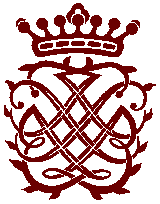
|

|
|
 
|
* CLICK LINKS TO LISTEN *
2. CANTATA BWV 182: Himmelskönig, sei willkommen.
3. CANTATA BWV 4: Christ lag in Todesbanden.
4. CANTATA BWV 150: Nach dir, Herr, verlanget mich |
The program opens with a Sinfonia, termed Concerto by Bach, from Cantata 152, a two-movement overture, the Adagio being followed by an Allegro fugue. This is a Weimar composition, 1715, for the Sunday after Christmas. The title, Tritt auf die Glaubensbahn, Tread the Path of Faith, is reflected in the joyful fugue, bringing to mind the a multitude of the faithful "tripping along" the path of true faith. The following cantata, 182, also dates from Weimar, being composed a year earlier in 1714. Bach's promotion to Concertmaster in 1714 dated from March 2nd. He was required to produce one cantata each month, and the fourth Sunday following his new appointment fell on March 25th, the double feast day of Palm Sunday and Annunciation. It was for this very special occasion that Bach composed cantata 182. A feature of the Wilhelmsburg Palace at Weimar was the Chapel, in which cantatas would have been performed. It was referred to in 1702 as "a world-famous masterpiece of architecture". Set into the ceiling like a cut-out was the spacious musicians' gallery complete with organ. Reflected down into the marble-walled chapel below, the sound would certainly appear to be coming from Heaven. Both the following cantatas, 4 and 150, go right back to Bach's Arnstadt years - his first appointment. While the wonderfully unique cantata 150 was most probably his first-ever cantata composition and follows closely the style of Buxtehude especially in its splendid passacaglia for choir and orchestra, cantata 4 may well have been the last cantata he composed at Arnstadt, perhaps as a test-piece for his next appointment, at Mühlhausen. This cantata remained one of Bach's favourites, being re-presented at least twice in Leipzig.
|
 |
 |
 |
 |
 |
 |
 |
 |
 |
 |
 |
 |